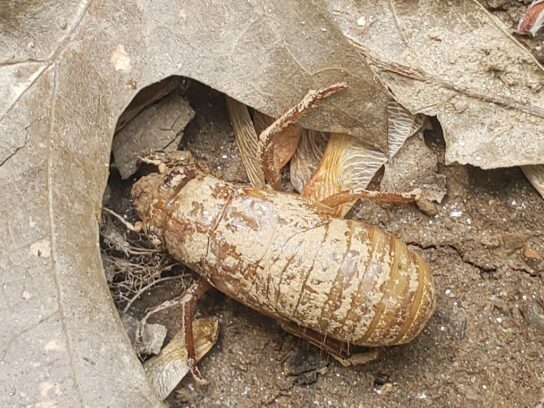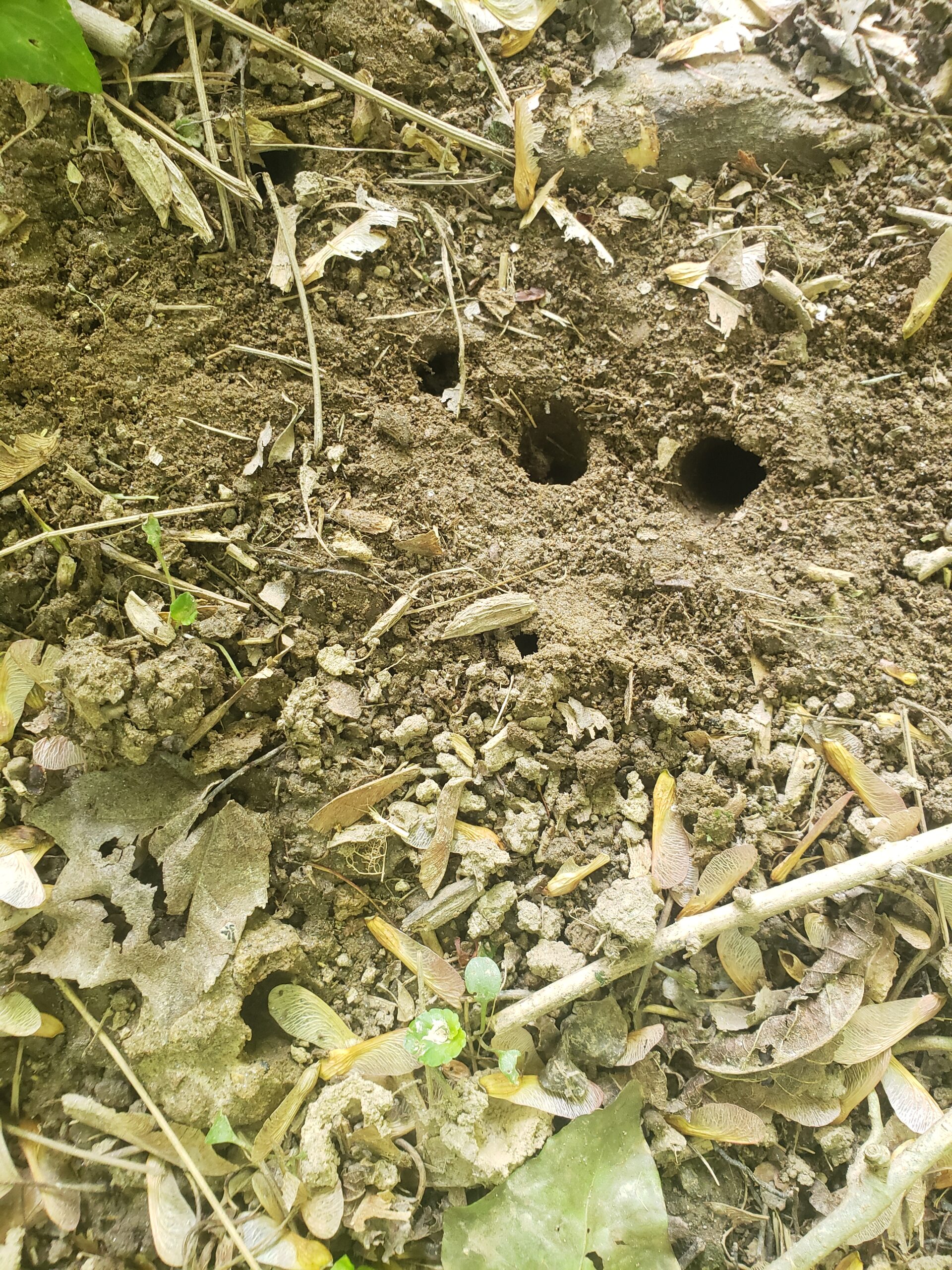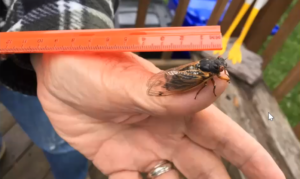
The cicadas that have been living underground in total darkness throughout the county for the past 17 years are expected to make their aboveground debut next week although a few already have surfaced.
This cicada pictured on the right was anxious and is already creeping around a backyard in Silver Spring.
Like clockwork, they Brood X (the X is for the Roman numeral 10) began digging their way to the surface, preparing to find a mate and make a nest for their eggs, all in the short span of two to four weeks, according to Clarence Hickey, an Aspen Hill resident who has loved these insects since he first learned about them.
During a virtual talk sponsored by Montgomery County Public Libraries (MCPL), Hickey said he expects them to emerge “probably early to mid-May,” noting that like some people today, the cicadas are emerging from quarantine and isolation.
“They do not eat or attack our gardens, our herbs, our plants, our veggies or flowers. They don’t do any of that. They are merely filling a void, an ecological void, a niche that is occupied by no other animal,” he said during the 75-minute talk.
They are edible and high in protein and low in fact with the “consistency somewhere between a lobster and a monkfish,” he said. He has never tasted one. “I just couldn’t do that. They are my friends,” he explained.
He began learning about the cicadas in the 1950s and has observed them closely during their emergences in 1987, 2004 and now 2021. During those cycles, the cicadas made their appearance between May 13, 1987 and June 26, 1987 and then again between May 7, 2004 and June 14, 2004.
“They have been my friends a long, long time,” he said of the insects that are native to North America and the Delaware-Maryland-Virginia region.
Other cicadas have different cycles, including one that appears annually.
During its 17 years underground, the Brood X cicadas have shed their skins five times. They then dig their way out. 
Once they are on the surface, they climb to the nearest tree, usually a hardwood tree like an oak or a maple. It takes them about an hour for their wings to expand and their legs to become strong enough to climb up the tree. When this is accomplished, they can then fly about.
The male begins singing to attract a mate. While his song is loud, it is the vast number of male cicadas who are singing that make them seem so loud. Fortunately, they are known for singing during the day, not at night.
Once mated, the females fly to a twig at the end of a tree branch and build a nest, depositing about 20 eggs, Hickey said. “A female cicada can lay several hundred eggs.”
Six to 10 weeks later, long after the parents have died, the newborn cicadas drop to the ground and burrow down, staying underground for precisely 17 years.
For those who look forward to the marvels of the cicada, fear not, there will be plenty of them around. For others not quite as anxious, just remember, they are only aboveground temporarily.
Click here for Hickey’s entire talk.
Cue the music of doom — we could start seeing cicadas in about a week. Here's our first-ever cicada forecast: https://t.co/EQ77uBElFE
— Capital Weather Gang (@capitalweather) April 27, 2021
https://twitter.com/capitalweather/status/1387791223533064192?s=20




Comments are closed.